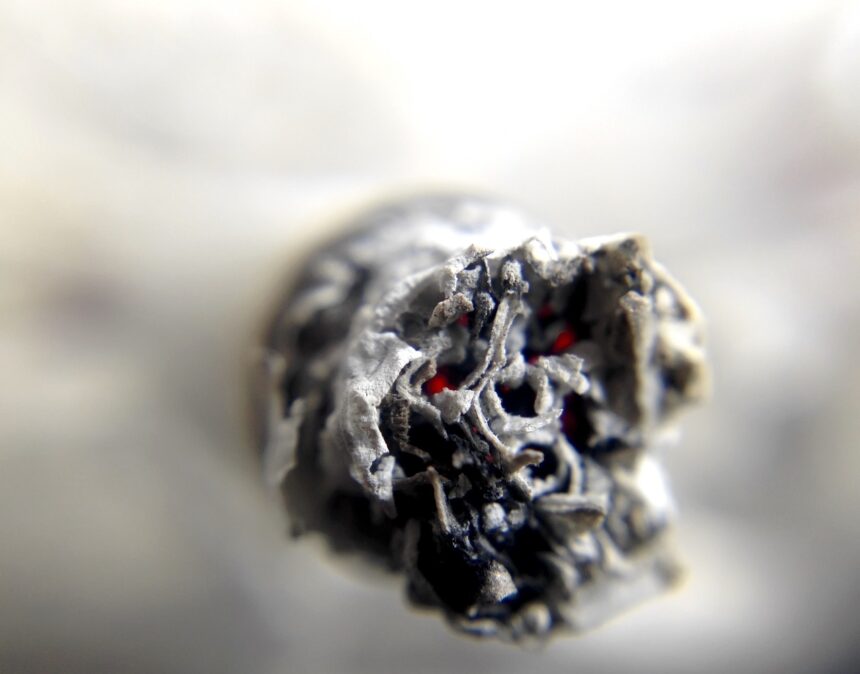Oral cancer refers to cancers that develop in the mouth (oral cavity) or the oropharynx (the part of the throat at the back of the mouth). It usually begins as a sore or lump that does not heal and can spread if not treated early.
TYPES OF ORAL CANCER
1. Squamous Cell Carcinoma (SCC) – The most common type (over 90% of cases), it originates in the thin, flat squamous cells lining the mouth and throat.
2. Verrucous Carcinoma – A slow-growing, less aggressive type of SCC that looks like warty growths.
3. Minor Salivary Gland Carcinomas – Cancers affecting small salivary glands in the mouth and throat, including adenocarcinomas, mucoepidermoid carcinomas, and adenoid cystic carcinomas.
4. Lymphomas – Cancers originating in the lymphoid tissue of the tonsils or base of the tongue.
5. Melanoma – Rare but aggressive, it develops in the pigment-producing cells of the oral mucosa.
RISK FACTORS
Oral cancer develops due to a combination of lifestyle choices, environmental exposure, infections, and genetic predisposition. Understanding these risk factors can help in prevention and early detection.
—
1. Tobacco Use (Strongest Risk Factor)
Tobacco contains carcinogens that damage the DNA of mouth and throat cells, increasing cancer risk.
Cigarette smoking – Increases risk significantly, especially with heavy, long-term use.
Cigars & pipes – Similar risks, with added exposure to lips and throat.
Chewing tobacco & snuff – Raises the risk of cancers inside the cheeks, gums, and lips.
Betel quid, gutkha, & areca nut (common in South Asia) – Contains chemicals that damage the oral mucosa, leading to pre-cancerous changes.
✔ Risk factor intensity: The longer and heavier the tobacco use, the higher the risk.
—
2. Alcohol Consumption
Heavy alcohol use (more than 3-4 drinks daily) increases the risk of oral cancer.
Alcohol weakens the cells’ ability to repair DNA damage.
When combined with smoking, the risk multiplies, making it more than 30 times higher than in non-users.
✔ Risk reduction: Cutting down or quitting alcohol significantly reduces risk over time.
—
3. Human Papillomavirus (HPV) Infection
HPV, particularly HPV-16, is linked to oropharyngeal cancer (cancers in the tonsils, base of the tongue, and throat).
HPV-related oral cancers are increasing, especially in younger adults and non-smokers.
HPV spreads mainly through oral sex and deep kissing.
HPV-positive cancers respond better to treatment compared to non-HPV cancers.
✔ Prevention: HPV vaccination (Gardasil 9 or Cervarix) reduces the risk.
—
4. Poor Oral Hygiene & Chronic Irritation
Poor dental care, gum disease, and persistent irritation from rough teeth, fillings, or dentures may promote cancerous changes.
Chronic inflammation weakens the immune system’s ability to remove abnormal cells.
✔ Prevention: Regular dental check-ups and proper oral hygiene reduce the risk.
—
5. Excessive Sun Exposure (Lip Cancer)
Ultraviolet (UV) rays damage the lips, leading to squamous cell carcinoma.
Farmers, outdoor workers, and sunbathers have a higher risk.
✔ Prevention: Use lip balms with SPF, wear a hat, and limit sun exposure.
—
6. Diet and Nutrition
Low intake of fruits and vegetables increases risk due to a lack of protective antioxidants, vitamins (A, C, E), and minerals (zinc, selenium).
Diets high in processed foods, red meat, and fried foods may contribute to inflammation and cancer risk.
✔ Prevention: Eat a diet rich in fresh fruits, vegetables, and whole grains.
—
7. Weakened Immune System
HIV/AIDS and immunosuppressive drugs (after organ transplants) increase susceptibility to infections and cancers.
Conditions like leukemia or lymphoma can also weaken immunity.
✔ Prevention: Manage underlying conditions and have regular screenings.
—
8. Age and Gender
More common in people over 40, with risk increasing as age progresses.
Men are twice as likely to develop oral cancer as women, possibly due to higher smoking and alcohol use.
✔ Prevention: Routine oral cancer screenings for those at higher risk.
—
9. Genetic Factors & Family History
A family history of oral, throat, or other cancers can increase susceptibility.
Some genetic syndromes (e.g., Fanconi anemia, dyskeratosis congenita) raise the risk.
✔ Prevention: Genetic counseling and regular monitoring if there’s a family history.
—
10. Occupational & Environmental Exposures
Exposure to asbestos, wood dust, formaldehyde, heavy metals, or chemicals in the workplace increases cancer risk.
Workers in industries like metal refining, painting, textile, and petroleum are at higher risk.
✔ Prevention: Use protective masks and follow safety guidelines at work.
—
11. Marijuana Use
Some studies suggest a possible link between marijuana smoking and oral cancers.
The higher heat from marijuana smoke may damage oral tissues.
✔ Prevention: More research is needed, but limiting use may be advisable.
—
12. Epstein-Barr Virus (EBV)
EBV, the virus that causes mononucleosis, is linked to nasopharyngeal cancer.
Though not a direct cause of oral cancer, EBV can contribute to cancers of the head and neck.
✔ Prevention: No vaccine exists, but a strong immune system helps lower risk.
Oral Cancer: Symptoms, Diagnosis, and Treatment
SYMPTOMS, DIAGNOSIS AND TREATMENT
Oral cancer can be life-threatening if not detected early. Understanding its symptoms, diagnostic methods, and treatment options is essential for early intervention.
Symptoms of Oral Cancer
Oral cancer can appear as persistent changes in the mouth or throat. Common signs include:
1. Early Symptoms:
✔ A sore in the mouth that does not heal within 2 weeks
✔ White or red patches (leukoplakia or erythroplakia) inside the mouth
✔ A lump, thickening, or rough spot in the mouth, lips, or throat
✔ Pain, tenderness, or numbness in the mouth or lips
2. Advanced Symptoms:
✔ Difficulty swallowing, chewing, or moving the tongue/jaw
✔ Persistent hoarseness or sore throat
✔ Ear pain that doesn’t go away
✔ Unexplained weight loss
✔ Loose teeth or ill-fitting dentures without dental issues
If any of these symptoms persist for more than two weeks, medical evaluation is necessary.
Diagnosis of Oral Cancer
1. Physical Examination
A dentist or doctor inspects the mouth, throat, and neck for abnormalities.
2. Biopsy
Incisional Biopsy: A small tissue sample is taken and examined under a microscope.
Fine Needle Aspiration (FNA): Used for lumps in the neck or salivary glands.
3. Imaging Tests
X-ray: To check for jawbone involvement.
CT Scan or MRI: Detects the tumor’s size and spread.
PET Scan: Helps in identifying cancer spread to other organs.
4. HPV Testing
If cancer is in the oropharynx, an HPV test may be done, as HPV-positive cancers respond better to treatment.
Stages of Oral Cancer
Cancer is classified into stages 0-IV based on size and spread:
Stage 0 (Carcinoma in situ): Abnormal cells, but no invasion.
Stage I-II: Small tumors confined to the oral cavity.
Stage III: Larger tumors or those affecting nearby lymph nodes.
Stage IV: Advanced cancer that has spread to distant organs.
Treatment of Oral Cancer
Treatment depends on the stage, location, and overall health of the patient.
1. Surgery
Tumor Removal: The primary treatment for localized tumors.
Lymph Node Dissection: If cancer has spread to the neck’s lymph nodes.
Reconstructive Surgery: Helps restore appearance and function after tumor removal.
2. Radiation Therapy
Uses high-energy beams to kill cancer cells, often used post-surgery or for small tumors.
3. Chemotherapy
Drug treatment to kill cancer cells, often combined with radiation for advanced cases.
4. Targeted Therapy
Cetuximab (Erbitux): A drug that targets specific cancer cell proteins.
5. Immunotherapy
For advanced cases, drugs like pembrolizumab (Keytruda) help the immune system fight cancer.
Prognosis and Survival Rate
Early detection (Stage I) has a 5-year survival rate of 80-90%.
Advanced cancer (Stage IV) has a lower survival rate (30-40%).
HPV-positive oropharyngeal cancers tend to have a better prognosis.
KEY TAKEAWAY FOR PREVENTION
✔ Quit smoking and avoid tobacco products
✔ Limit or avoid alcohol consumption
✔ Get the HPV vaccine to prevent HPV-related oral cancers
✔ Maintain good oral hygiene and dental care
✔ Eat a healthy, antioxidant-rich diet
✔ Protect lips from sun exposure with SPF lip balm
✔ Avoid occupational exposure to hazardous chemicals
✔ Have regular dental and medical check-ups for early detection
We are always here to help ,Contact Us


